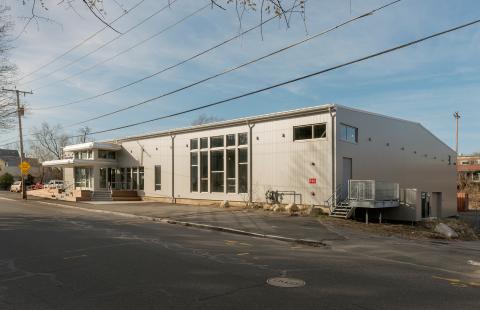What were the specific goals of this creative economy project? Describe the community development challenge or opportunity that your project was designed to address:
With this project, the Arts Trust’s goal is to meet the community’s need for affordable space for creative work by acquiring a suitable property in Northampton, thereby protecting that property from market forces now and into the future
Who was involved in this project and what did they do? (be sure to include the partners from outside of the creative sector and how local voices were included):
The Arts Trust was born out of discussions about the increasing loss of affordable creative space in downtown Northampton among several established local arts organizations, including the Northampton Arts Council, A.P.E. Ltd, the Northampton Center for the Arts, the Young@Heart Chorus, New Century Theatre and others. Beginning in the 1970s, the abundance of vacant and inexpensive spaces in downtown Northampton began to attract artists and creative businesses. This imaginative and innovative culture propelled the city’s economic growth. But success came at the cost of affordable space. In these discussions, APE presented the idea of creating an entity adapted from the model of a land trust. As a land trust protects open land from development to preserve it for agriculture or recreation, an arts trust would secure built space for creative work and use the land trust model to protect that space from future development and market forces.
How does this project relate to a larger community development strategy?
One of the guiding principles of the City of Northampton’s “Sustainable Northampton Comprehensive Plan,” produced by the City’s planning department, is to “support artists and art … at all levels.” The Plan is specific about the need to support existing arts and cultural facilities, and also calls for an expansion of local cultural venues. The City recognizes that the 33 Hawley Street project will go far to addressing this need.
What projects or places, if any, inspired your approach to this creative economy project?
As noted above, the Arts Trust’s mission - to acquire, protect and preserve affordable space for creative work - was inspired by land trusts, which preserve open land for agriculture or other purposes. In establishing the Arts Trust, we were influenced by the Schumacher Center for New Economics and the Berkshire Community Land Trust. We also looked at a number of arts organizations around the country that had acquired property through gifts or purchases, enabling them to provide affordable arts spaces for the long term and thus keeping artists central to the community in a sustainable manner. While conducting this research, members of the Arts Trust board visited AS220 in Providence, RI, and spoke with representatives of a number of arts organizations, including the Community Arts Stabilization Trust in San Francisco, CA, the Arsenal Center for the Arts in Watertown, MA, Real Artways in Hartford, CT, Cultural DC in Washington, DC and St. Marks Church in New York, NY.
